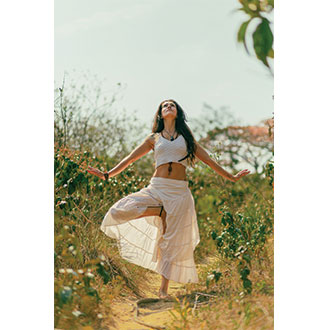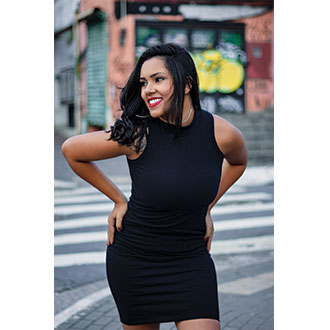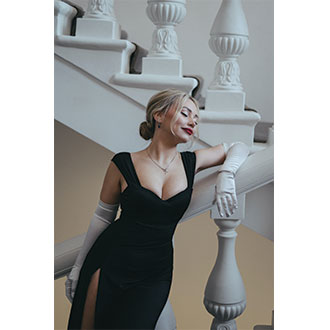








Sri Lanka is renowned for textiles produced on centuries-old handcrafted weaving looms, and for its batik artwork. This technique of hand-dyeing fabrics that uses wax as a dye repellent to cover parts of a design has today acquired a distinctive look, with contemporary designers creating colourful patterns on all manner of handmade garments from shirts, dresses and skirts to sarees and sarongs.
Over past decades, the country's fashion and textile industry also embraced more than a dash of Western influence, adopting some of the timeless classic pieces that never go out of style. We may pinpoint the 1970s when Sri Lankan women were greatly influenced by the 'Cultural Revolution' that had begun after the Second World War. Social expectations changed significantly, along with the way women dressed, allowing them to enjoy increased freedom and contribute to the metamorphosis of traditional attire across the country. However, eager youngsters had been interested in and influenced by Western fashion long before then!
Can you remember some of these 'Timeless Fashion Classics'?
1950s – 1960s
The 1950s is sometimes known as the ‘era of grace’, as it saw the height of the golden age of Hollywood featuring a plethora of beautiful pin-ups such as Marilyn Monroe, Sophia Loren, Elizabeth Taylor and Grace Kelly clad in full skirts and puffed sleeves. Glamour had returned with figure-defining garments worn by women with hourglass silhouettes, and this continued into the swinging ‘60s.
The model Twiggy and sex symbols like Brigette Bardot served as role models for the 1960s, while Mary Quant's miniskirts and the Modish shift dress (made glamorous by former First Lady Jackie Kennedy) were all the rage. Towards the end of the 1960s, along with miniskirts and short ‘A-line’ skirts, Sri Lankans took to wearing the ‘tunic dress’. This mid-thigh dress could be made with or without sleeves, which were often bell-shaped or cap sleeves. The sleeved tunic dress was called the Ruth Tunic and was very popular in Sri Lanka.
1970s – 1980s
In 1972, Ceylon's British colonial name was completely eradicated from state institutions as it became a republic, but the introduction of jeans from Britain was an important turning point in the history of Sri Lankan fashion. Although the decade began with Welsh fashion designer Laura Ashley's long hippy floral maxi-dresses (and it was to finish with shiny, glitzy disco attire), the 1970s most recognisable fashion feature was blue denim, with flared jeans being popularised by American film star Farrah Fawcett and the English-French singer and actress Jane Birkin.
This revolutionised the way people dressed, as women bought clothes that were traditionally worn by men, and local women were gradually to be seen wearing trousers in public. The ‘bell-bottom’ was a very popular trouser style among young Sri Lankan women during the 1970s and 1980s, along with the similar 'loon pants' (trousers with very wide flared legs).
Also during the 1970s and ‘80s, young women in Sri Lanka wore shirtdresses and short kaftan dresses made of chiffon fabrics or checked cotton. Usually worn as a short top with a full-flared long or short skirt, the dresses were influenced by both Western and Sri Lankan traditions. Even the traditional Sri Lankan redda-hatte (cloth and jacket) became increasingly fashionable during this period of great change.
By the 1980s, icons such as Madonna, Joan Collins and Princess Diana were becoming bolder in their style, with extravagant big shoulders, big earrings and big hair. Blazers in black were a signature of the ‘80s, promoting unrepentant maximalism. It was to become a new era of 'power dressing', which would yet again have a dramatic impact on the female wardrobe.
#fashion #classics #textileindustry #srilanka #srilankans #hollywood #swingingsixties #glamour #miniskirt #jeans #kaftan #traditionalclothing #powerdressing #floraldresses







